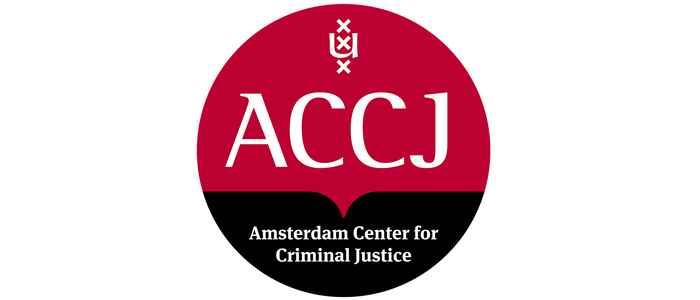Reimagining Criminal Justice: Lessons from Amsterdam’s Progressive Model
The stark contrast between Amsterdam’s criminal justice system and that of the United States reveals critical deficiencies in the American approach, emphasizing the urgent need for reform. While the U.S. continues to rely heavily on punitive incarceration and deterrence, Amsterdam champions rehabilitation, decriminalization, and restorative justice—strategies that foster community well-being and significantly lower repeat offenses. This comparative analysis not only exposes the shortcomings of the U.S. framework but also highlights innovative pathways toward a more just and effective system.
Restorative Justice in Amsterdam: Healing Over Punishment
Amsterdam’s criminal justice philosophy views crime as a rupture in social cohesion rather than merely a legal infraction. Central to this approach is facilitating meaningful dialogue between offenders and victims, which cultivates empathy, responsibility, and reconciliation. Instead of defaulting to incarceration, the city employs mediation sessions where both parties discuss the harm caused and collaboratively determine appropriate reparations—often involving community service or direct compensation. This method has been linked to a notable decline in recidivism and enhanced public confidence in justice institutions.
Core elements of Amsterdam’s restorative justice framework include:
- Empowering victims: Victims play an active role in shaping outcomes.
- Holding offenders accountable: Offenders face the personal consequences of their actions.
- Engaging the community: Local networks support healing and reintegration.
| Aspect | Amsterdam’s Restorative Justice | Conventional Justice System |
|---|---|---|
| Primary Focus | Restoration and healing | Punishment and deterrence |
| Typical Outcome | Reparation and reconciliation | Incarceration or fines |
| Victim’s Role | Active participant | Often marginalized |
| Long-Term Impact | Lower rates of reoffending | High recidivism |
Community-Centered Rehabilitation: Cutting Recidivism in Amsterdam
Amsterdam’s impressive success in reducing repeat offenses stems from its investment in community-based rehabilitation programs that address the root causes of criminal behavior. These initiatives provide tailored support to formerly incarcerated individuals, tackling challenges such as substance abuse, mental health disorders, and employment barriers. Unlike many U.S. prisons, which suffer from overcrowding and insufficient resources, Amsterdam’s holistic programs foster accountability and social reintegration.
Essential components of Amsterdam’s rehabilitation efforts include:
- Personalized counseling: Mental health services designed to meet individual needs.
- Skills development: Vocational training and education to enhance employability.
- Community partnerships: Collaborative networks that support reintegration during and after incarceration.
- Ongoing supervision: Continuous follow-up to reduce relapse into criminal activity.
| Program Element | Amsterdam’s Method | Typical U.S. Practice |
|---|---|---|
| Mental Health Care | Integrated, continuous support | Fragmented and limited |
| Employment Assistance | Active job placement programs | Minimal or absent |
| Community Engagement | Robust collaboration | Infrequent and inconsistent |
Combating Racial Inequities Through Policing Reforms
Amsterdam’s policing philosophy offers a valuable blueprint for addressing entrenched racial disparities prevalent in many U.S. law enforcement agencies. Rather than relying on aggressive tactics, Amsterdam emphasizes community engagement, transparency, and de-escalation techniques. Officers are trained to see themselves as integral members of the communities they serve, fostering trust and reducing incidents of racial profiling and police violence. This approach contrasts sharply with many American cities, where confrontational policing has eroded public confidence.
To emulate Amsterdam’s success, U.S. law enforcement must adopt comprehensive reforms, including:
- Implicit bias education: Ongoing training to identify and mitigate unconscious prejudices.
- Community policing: Embedding officers within neighborhoods to build lasting relationships.
- Independent oversight: Establishing external bodies to investigate misconduct and enforce accountability.
- Restrictive use-of-force policies: Prioritizing non-lethal methods and clear guidelines on force application.
| Indicator | Amsterdam | U.S. Average |
|---|---|---|
| Racial Profiling Complaints (per 1,000 residents) | 2 | 15 |
| Use of Force Incidents (per 1,000 residents) | 1 | 8 |
| Community Trust Score (out of 100) | 78 | 45 |
These figures highlight the profound impact of community-focused, equity-driven policing on reducing racial disparities and enhancing public trust. For the U.S., reforming law enforcement is not only a moral obligation but a strategic necessity to rebuild legitimacy and ensure safety for all citizens.
Prioritizing Prevention and Social Support to Improve Justice Outcomes
Amsterdam’s criminal justice success is deeply rooted in its commitment to prevention and social services rather than punitive incarceration. By channeling resources into mental health care, addiction treatment, education, and stable housing, the city creates conditions that deter criminal activity before it begins. This comprehensive approach addresses systemic issues, leading to safer communities and lower rates of reoffending.
Strategies fueling Amsterdam’s achievements include:
- Expanding early childhood education and family support initiatives
- Providing extensive rehabilitation and job training after release
- Favoring diversion programs over arrests for minor, nonviolent offenses
- Collaborating with community groups to co-create public safety solutions
| Metric | Amsterdam | U.S. Average |
|---|---|---|
| Recidivism Rate | 15% | 43% |
| Post-Release Housing Stability | 85% | 57% |
| Access to Mental Health Services | 90% | 40% |
Final Thoughts: Embracing Change for a Fairer Justice System
Examining Amsterdam’s forward-thinking criminal justice strategies reveals vital lessons for the United States as it confronts challenges like mass incarceration, racial inequity, and ineffective rehabilitation. Amsterdam’s emphasis on decarceration, restorative justice, and community investment offers a promising blueprint for transforming justice outcomes. While the path to adopting such reforms in the U.S. is complex and uncertain, international examples demonstrate that meaningful, equitable change is achievable and essential for a safer, more just society.







